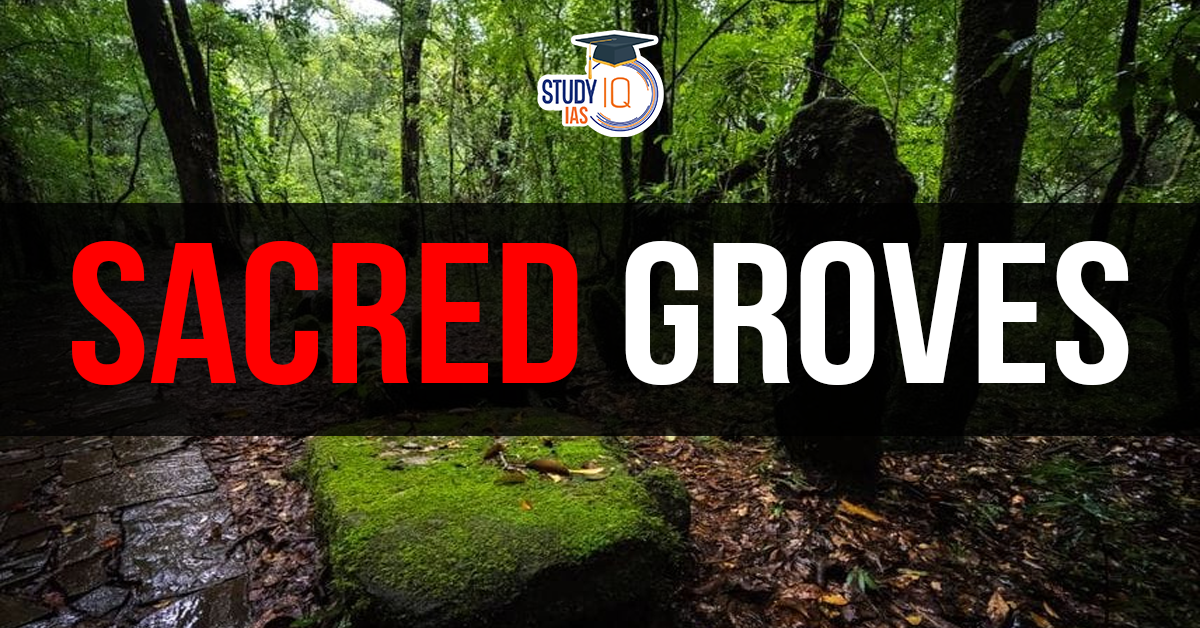Table of Contents
Context: The Supreme Court has ordered the Rajasthan Forest Department to map and classify sacred groves as ‘forests’ and ‘community reserves’ under the Wildlife Protection Act.
About SC Directives
- The Supreme Court (SC) of India ordered the Rajasthan Forest Department to map all sacred groves using both ground surveys and satellite imagery.
- The groves must be identified based on their cultural and ecological significance, irrespective of their size.
- The court directed that these groves be classified as ‘forests’ and notified as ‘community reserves’ under the Wildlife Protection Act (WLPA) 1972.
- This ruling effectively transfers control from local communities to forest authorities for conservation.
- The decision conflicts with the Forest Rights Act (FRA) 2006, which sought to restore control over forest land to gram sabhas
About Sacred Groves
- Sacred groves are patches of natural vegetation protected for their religious, cultural or ecological significance.
- These areas are often associated with deities, spirits or religious beliefs, and human interference is generally prohibited or restricted.
- India has over 13,000 documented Sacred Groves.
- They are protected under the Wildlife Protection Act,1972.
| Sacred Groves in Rajasthan |
|
Some Famous Sacred Groves of India
- Living Root Bridges (Jingkieng Jri) of Meghalaya: They are recognized as a UNESCO World Heritage Site.
- Hariyali: This is one of the largest sacred groves of India, located near Gauchar in Chamoli District of Uttarakhand.
- Deodar grove: located in Shipin near Simla in Himachal Pradesh.
Guidelines of Supreme Court
- The Ministry of Environment, Forest and Climate Change (MoEFCC) will conduct a nationwide survey.
- The survey should identify the area, location and extent of sacred groves in each state.
- Boundaries of sacred groves should remain flexible to accommodate natural growth but must be strictly protected against any reduction due to agricultural activities, human habitation or deforestation.
Local Names of Sacred Groves
| State | Local Name | State | Local Name |
| Haryana | Kovil Kadu | Meghalaya | Kaw Kyntang |
| Himachal Pradesh | Dev Van | Manipur | Umang Lai |
| Rajasthan | Orans | Assam | Than |
| Maharashtra | Devrai | Kerala | Kavu |
| Madhya Pradesh | Sarna, Dev | Karnataka | Devarakadu |
| Odisha | Jahera, Thakuramma | Gujarat | Sabarkantha, Banaskantha |
What are Community Reserves?
- Introduced in the WLPA (2002) as a category of Protected Areas (alongside national parks and wildlife sanctuaries).
- Community reserves are declared over private or community lands where locals have agreed to conserve wildlife.
- A Community Reserve Management Committee is responsible for overseeing the management of the reserve.
- Restrictions in Community Reserves:
- No hunting or harming wildlife.
- Any land-use changes require approval from both the management committee and the State government.
Conflict Between the Supreme Court Order and the Forest Rights Act (FRA) 2006
- The FRA 2006 recognizes the customary rights of forest-dependent communities.
- If sacred groves were covered under FRA, they would be classified as ‘community forest resources’ rather than community reserves.
- Community Forest Resources (CFR) under FRA:
- Managed by gram sabhas rather than the Forest Department.
- Gram sabhas have statutory power to protect, regenerate, and conserve these forests.
- Communities must develop their own conservation plans, supported by the State government.
- By classifying sacred groves as ‘community reserves’, the SC ruling undermines the traditional governance model and FRA provisions.
- The Union Environment Ministry has been asked to map all sacred groves in India and formulate a national policy.


 Bioluminescent Beaches - Kavaru
Bioluminescent Beaches - Kavaru
 Malabar Grey Hornbill, Characteristics a...
Malabar Grey Hornbill, Characteristics a...
 Salt Pan Land Cleared for Dharavi Redeve...
Salt Pan Land Cleared for Dharavi Redeve...





















